Deploying a new SaaS product takes years of development and preparation, not to mention the amount of resources being poured into it to perfect the product. Considering all the time, effort, and resources invested in the app, it would be a terrible waste if users couldn’t take full advantage of it. Whatever product is being developed by a SaaS company, they all need one crucial ingredient to make sure their product is a success—good customer training.
Even the most highly intuitive application in the market still requires some form of demonstration, manual, or training program in order for users to fully grasp the application’s capabilities. Unfortunately, quite a number of SaaS companies are unable to create effective onboarding programs for their customers. Here’s what you can do to create a holistic and engaging training experience that’s both efficient and value-adding to your SaaS applications.
1. Creating Smart Training Content
Unlike any other physical product that is being introduced in the market today, a SaaS application is a far more complex kind of “product” that involves a steep learning curve. For any user to understand and fully utilize your application, you need well-thought-out content for your training program.
Instead of relying on text-based presentations, slideshows, and static images, your training should employ a combination of text, video, infographics, and audio lessons. This is essential if you want to create entertaining, engaging, and easy-to-digest training content. This requires excellent insight into what possible support situations may arise in the future that would benefit from your training materials.
2. Developing Efficient and Supportive Training Programs
Once you’ve pinned down what type of training content you would like to have and in what format, proper execution would be the next logical step. Today, most SaaS companies rely too much on live demos of their product, which is an effective training tool, but it’s far too repetitive, time-consuming, and tedious to keep up. Every time a customer requests a demo, you need to have someone who knows everything about the application to onboard the customer.
Instead, hiring a training video developer would be a much better option. This can save you and your developers a lot of time doing the training yourselves. You can also employ an eLearning authoring tool or hire an eLearning course designer to help you create engaging and professional-grade training content. This can be a huge advantage as you don’t have to figure out how to create training materials by yourself.
3. Distributing Your Training Program
Creating an onboarding course and training program is just half the battle. The other half is distribution, which can be easily done with the help of a learning management system (LMS). These are mostly cloud-based solutions that allow businesses to store and distribute their training content in a quick and efficient manner. Learning management systems are designed by eLearning portal developers to make sure every user’s training experience is engaging and beneficial to the customer.
Conclusion
The work of a SaaS developer or company doesn’t stop when they launch their new product. They need to figure out how to effectively communicate with customers and educate them about the features and benefits of their application. These three steps are vital to making sure that your product is accessible and attractive to potential customers.
Bihasa is a digital learning company in the Philippines committed to helping SaaS developers and training agencies. We create professionally designed videos and learning courses that can help you make your customers understand you better and your products. Rely on our eLearning course designers and developers to help you take the leap in digital learning. Contact us today to get started!

